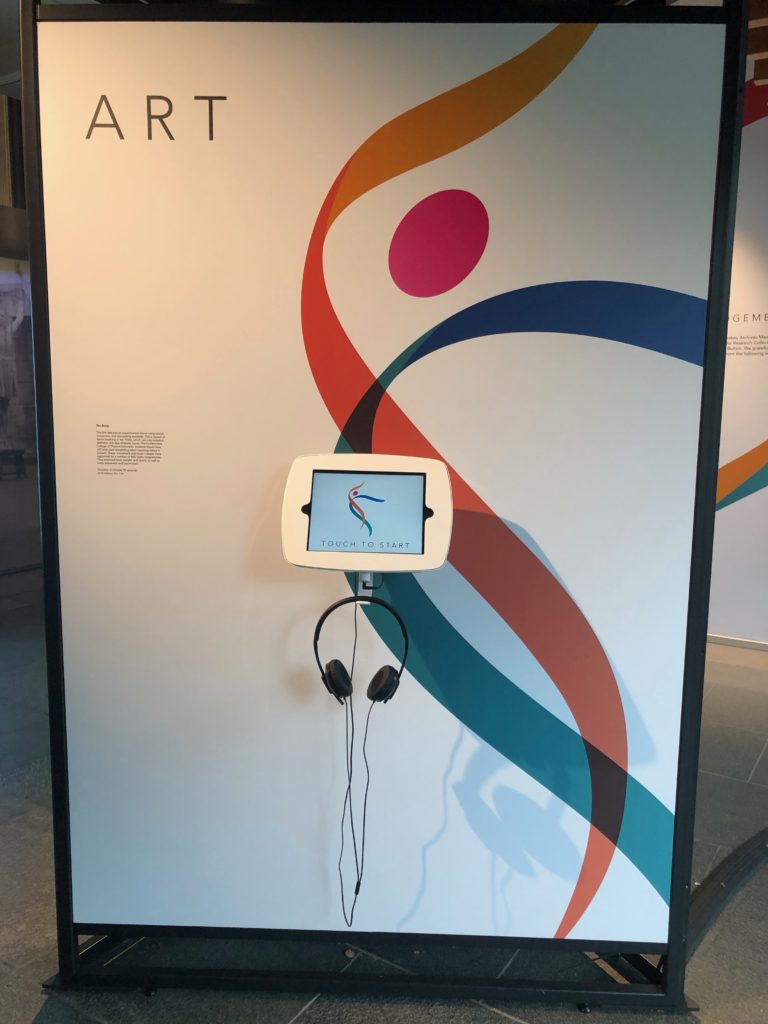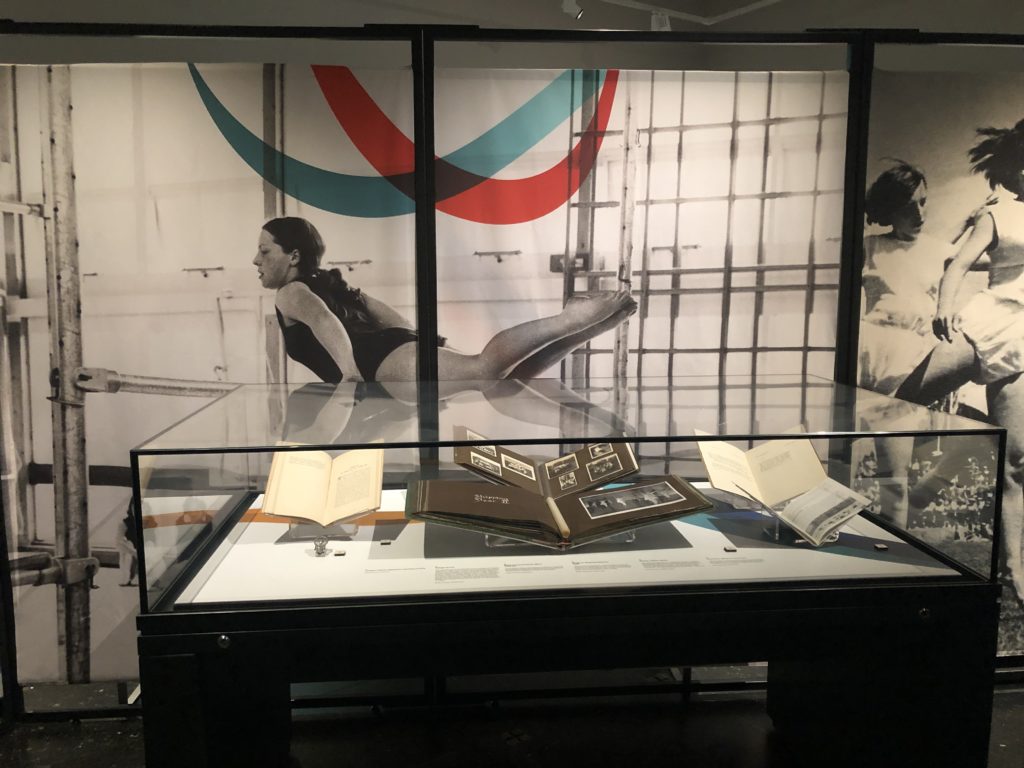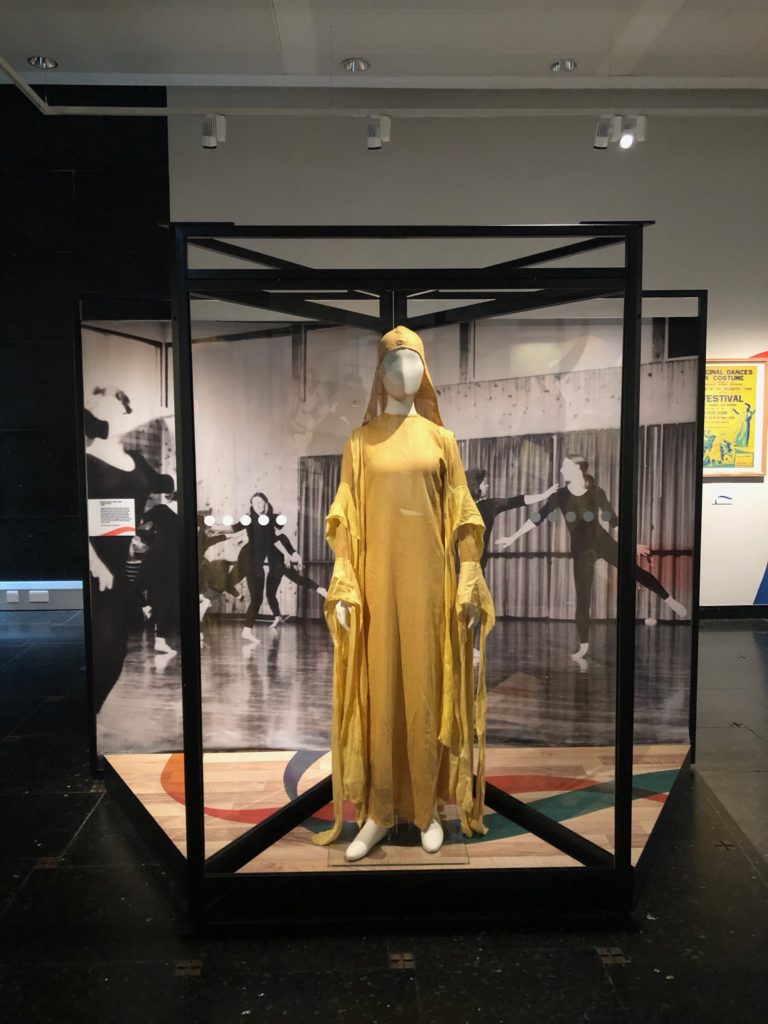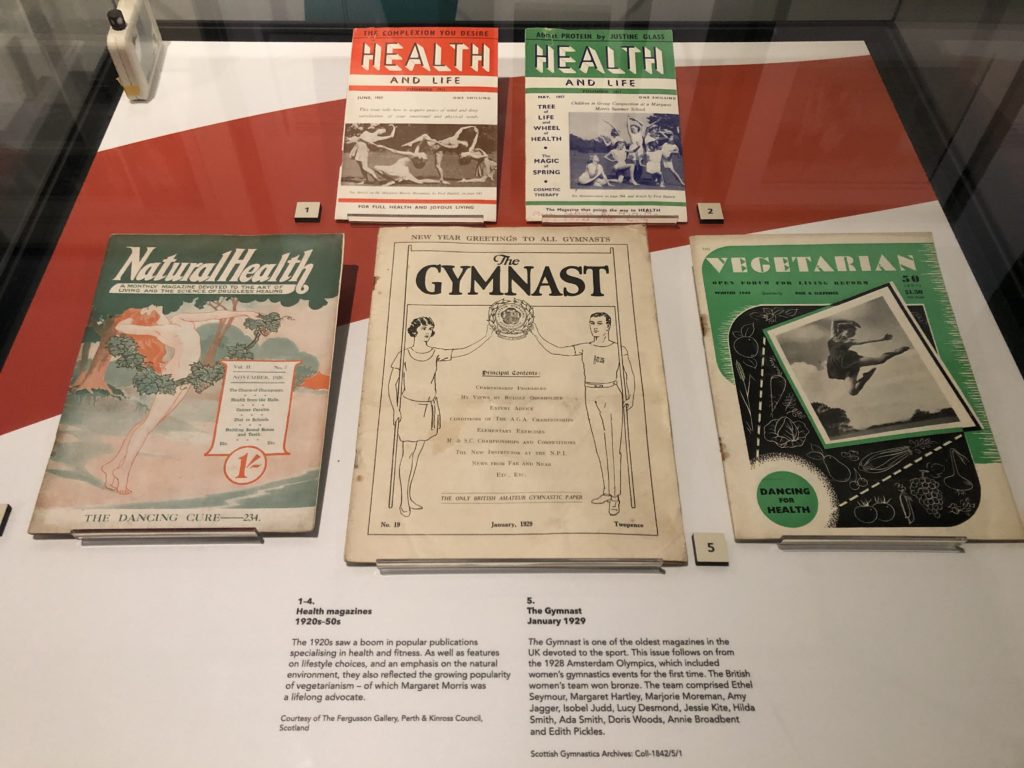In our induction meeting to NLS, Calum (Exhibitions Officer), gave a presentation that outlined the potential benefits of using digital methods to engage audiences, including adaptability, ease of sharing and creative potential. Alice (Learning and Outreach Officer), also discussed the promise digital brings as a connection between past and present in a medium a lot of people can access. Despite this, we have also been made aware that due to the library being part of a legal deposit system, legislation can prohibit using some content from an access point of view. I would hope one way our project can be of value to NLS is to promote the need for accessibility via exhibitions to the public by showing the benefits of including a mixture of both digital and physical content for learning purposes. I wanted to highlight current, local, institutional exhibitions for examples that played with this.
Body Language (July-October), a short exhibition at University of Edinburgh’s Library exhibition space showcased Scotland’s contributions to movement and dance through curation of local archives including that of dance pioneer Margaret Morris. The exhibition’s content was not only highly relevant to our project, but also its method of display, which I found very immersive on account of the variety of material culture, which included textiles, photography, posters, dance notes, video and more. Here, digital tablets and headphones were used to display various dance films at the start of the exhibition, which I found made me more appreciative of the individual physical objects included and what role they have played.

Tablet and headset available to experience ‘The Gong’, an experimental dance film c. The Author (2019)

Enlarged photographs printed onto fabric works well as a backdrop c. The Author (2019)

Ingenious idea to use flooring reminiscent of a gym hall into the structural design c. The Author (2019)

The exhibition design runs fluidly throughout all of the displays, bringing them together c. The Author (2019)
Another exhibition I visited was the Fashion and Style gallery in National Museums Scotland. One of ten major galleries added to NMS in 2016, I really liked how the space was designed to incorporate physical objects such as textiles, books and sketches with video, projections and permanent electronic display screens. In a gallery which exhibits only a small selection of a phenomenal range of historical textiles and styles, I thought the exhibition space served its purpose well in giving a flavour and introduction to fashion and showcasing its continual innovation and design.

Two fifteen foot high suspended screens show projections of a mixture of film and manipulated archive footage of fashion shows c. The Author (2019)

Digital display screens elevate the space both physically and contextually c. The Author (2019)

Touch screens allows visitors to zoom in and read additional information c. The Author (2019)

Lighting is used to highlight the physical objects and provide balance c. The Author (2019)
We are currently in the process of determining which collections we will be including in our own exhibition, it is likely that they will also span decades and maybe even centuries, I hope through a mixture of physical and digital we are able to also bring an eclectic mix of collections together in a solidified and engaging space for visitors.

Leave a Reply